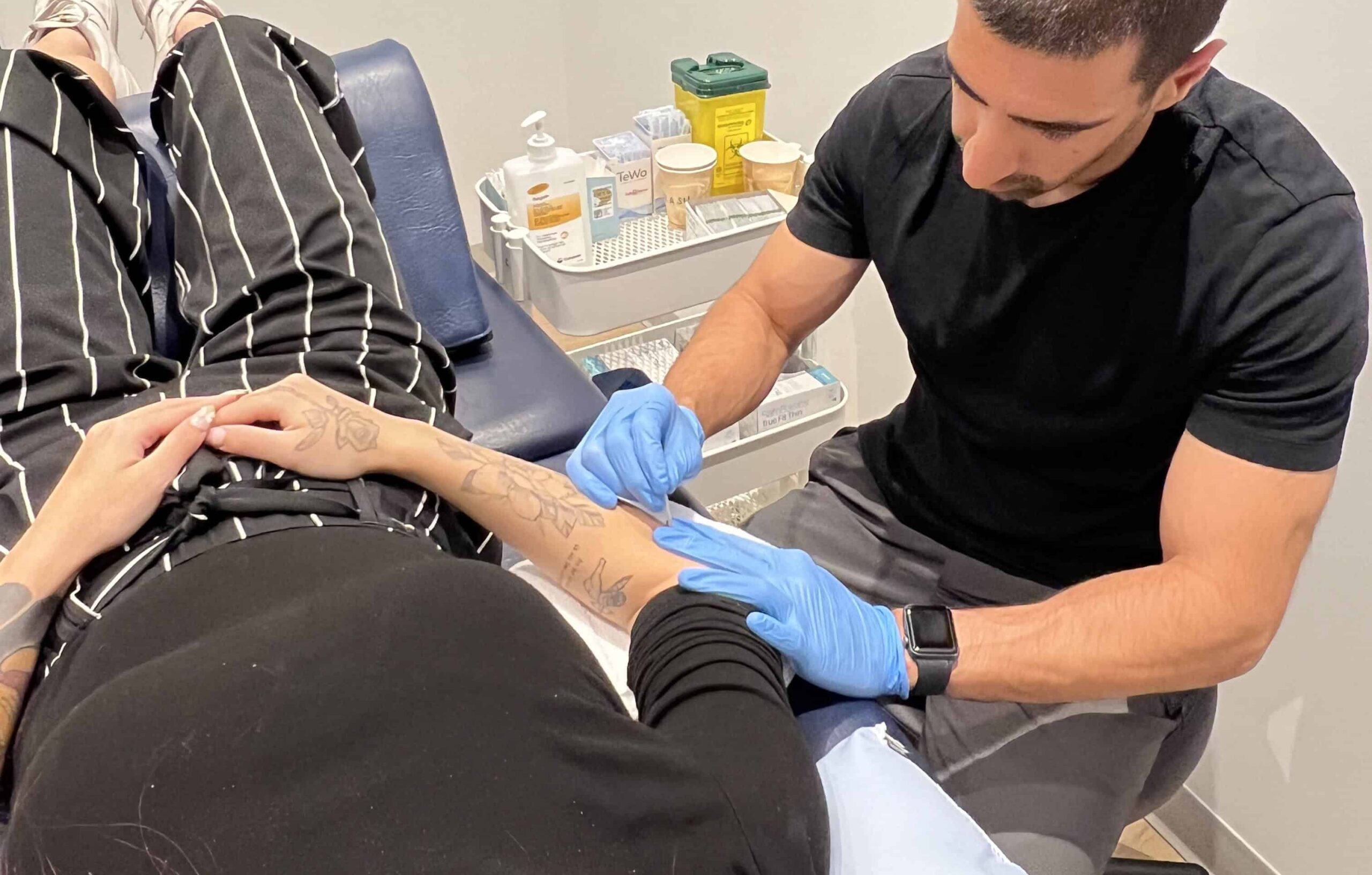by Parm Bhullar, Physiotherapist
What are the symptoms of knee osteoarthritis?
Although these can vary depending on the severity and cause, the most commonly reported symptom from individuals with knee OA is pain around the knee joint.1 Pain can range in severity (mild → moderate), character (dull → sharp), and duration (intermittent → constant).1 Experiencing pain in the knee joint can make daily mobility tasks, such as climbing stairs and walking, difficult. Some individuals may experience more pain in the mornings, following periods of prolonged sitting or strenuous activity.1 These symptoms can be felt in one or both knees depending on the individual.
What are the risk factors for knee osteoarthritis?
The following factors can be associated with knee osteoarthritis: age, previous injury, sex, physical inactivity, obesity, genetics, and joint stress.1
Isn’t knee OA just a normal part of aging?
It was once previously thought to be a consequence of aging, however current literature has disproved that belief. Knee OA is now thought to result from “a multifactorial, complex interplay of constitutional and mechanical factors, including joint integrity, genetic predisposition, local inflammation, mechanical forces, and cellular and biochemical processes.”1 Therefore, we can now refute the term “wear and tear” and begin to understand that there is more complexity to the presentation.
If someone has knee pain, how would they go about receiving a diagnosis? Do you need an x-ray?
While an x-ray can confirm a diagnosis, it is not required.1 A diagnosis can be made from a patient interview and a thorough physical examination. The examination should include a subjective and objective assessment.
During the subjective, the health care practitioner will likely ask about your pain, specifically about how many days it has occurred over the past 3 months, how long it lasts in the morning, and questions that relate to your previous medical history.1
During the objective, the health care practitioner will likely assess your ability to complete functional tasks, measure knee joint range of motion and palpate the area for any swelling or tenderness.1
I received an x-ray, which confirmed the diagnosis. The words “bone on bone” and “degenerative” were used during the consultation. How do I avoid worsening my presentation?
I’m not quite sure where this notion of “bone on bone” began, but it serves more of a barrier to movement than providing an explanation for the presentation. While x-rays and MRIs can be useful in diagnosing and determining severity of injuries, scans do not tell the full story. In fact, there was a study completed recently which found abnormalities in the majority of knees in asymptomatic adults.2 The takeaway is that the result of the finding does not indicate the degree of pain or loss of function. As physiotherapists, we’re more focused on treating the individual than the image finding.
What are the treatment options for knee osteoarthritis?
Best management of knee osteoarthritis comprises a combination of non-pharmacological and pharmacological modalities.3 For the sake of this blog, pharmacological modalities will not be covered, as the individual should be recommended to follow-up with a doctor or physician to seek further advice. As for non-pharmacological interventions, the treatment should be a combination of education, exercises, weight reduction strategies and pacing of activities.3
Is it safe for me to exercise? Will it worsen the pain the more I move?
Exercise should be a first-line treatment, as the evidence supports its effectiveness in regards to pain and function for individuals with hip or knee OA.4 However, the evidence isn’t as clear about the dosage of the exercises. Rather than labeling exercises as “good” or “bad,” the individual should work with their health care provider to determine the best individualized program to meet their needs. For example, exercise preferences, accessibility and affordability might play a factor in determining the advice and specific exercises for an individual.4
As for pain, this can be a barrier to initiate and adhere to an exercise program or routine. There is not a clear acceptable range in the literature at this time.4 Determining these acceptable levels should be a shared-decision making process between the healthcare practitioner and the patient.4
Have more questions about treatment and exercises? Click here to book with Parm or one of our other physiotherapists to learn more about what you can do!
References:
-
- Lespasio, M. J., Piuzzi, N. S., Husni, M. E., Muschler, G. F., Guarino, A. J., & Mont, M. A. (2017). Knee osteoarthritis: a primer. The Permanente Journal, 21.
-
- Horga, L. M., Hirschmann, A. C., Henckel, J., Fotiadou, A., Di Laura, A., Torlasco, C., … & Hart, A. J. (2020). Prevalence of abnormal findings in 230 knees of asymptomatic adults using 3.0 T MRI. Skeletal radiology, 49, 1099-1107.
-
- Zhang, W., Moskowitz, R. W., Nuki, G., Abramson, S., Altman, R. D., Arden, N., … & Tugwell, P. (2008). OARSI recommendations for the management of hip and knee osteoarthritis, Part II: OARSI evidence-based, expert consensus guidelines. Osteoarthritis and cartilage, 16(2), 137-162.
Kolasinski, S. L., Neogi, T., Hochberg, M. C., Oatis, C., Guyatt, G., Block, J., … & Reston, J. (2020). 2019 American College of Rheumatology/Arthritis Foundation guideline for the management of osteoarthritis of the hand, hip, and knee. Arthritis & Rheumatology, 72(2), 220-233.


